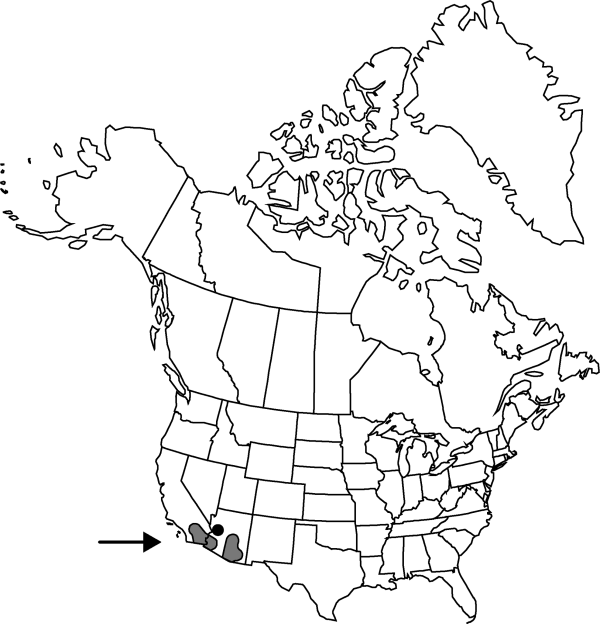Atriplex linearis
Proc. Amer. Acad. Arts 24: 72. 1889.
Shrubs dioecious, erect, mainly 10–25 dm; branchlets slender, terete. Leaves sessile; blade narrowly linear-elliptic, 10–50 × 2–3 mm, firm, revolute, often acute apically. Staminate flowers in glomerules borne in slender interrupted mostly paniculate spikes. Pistillate flowers paniculate or in few-flowered axillary glomerules. Fruiting bracteoles sessile or subsessile, lanceolate to ovate, 4–6 mm, about as wide, each bract with a pair of thin wings 3 mm broad or less, irregularly dentate or laciniate, free tips of bracts much exceeding the wings. 2n = 18.
Phenology: Flowering spring–fall.
Habitat: Saline deserts, with shadscale, Canotia, Yucca, Opuntia, Rhus, and Eriogonum
Elevation: 0-800 m
Distribution

Ariz., Calif., nw Mexico (Baja California, Sonora).
Discussion
Specimens of Atriplex canescens var. macilenta resemble A. linearis. The taxa have been placed together by some previous workers. Nevertheless, the stems of A. linearis are consistently more slender, the leaves proportionally narrower, and the bracts, though smaller, more closely simulate those of A. canescens. Its diploid nature signals a different evolutionary pathway than that for most of A. canescens, considered broadly. Narrow leaves occur within A. canescens, in the broad sense, sometimes with geographic correlation, sometimes not.
Selected References
None.